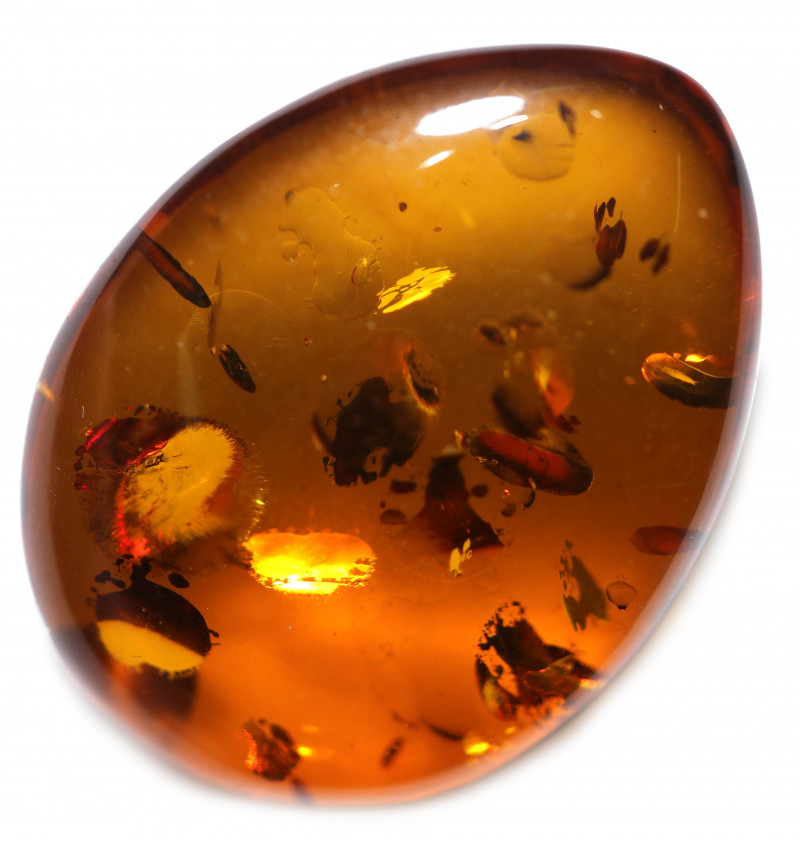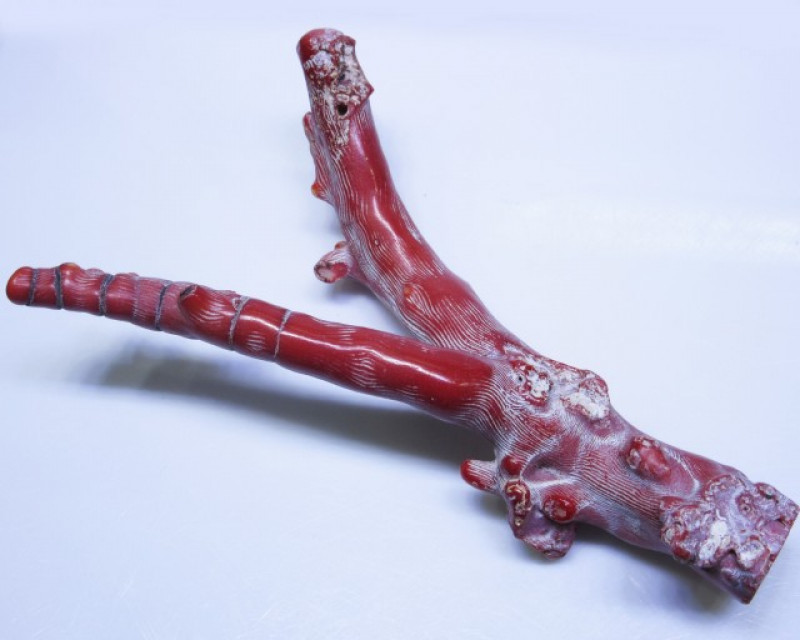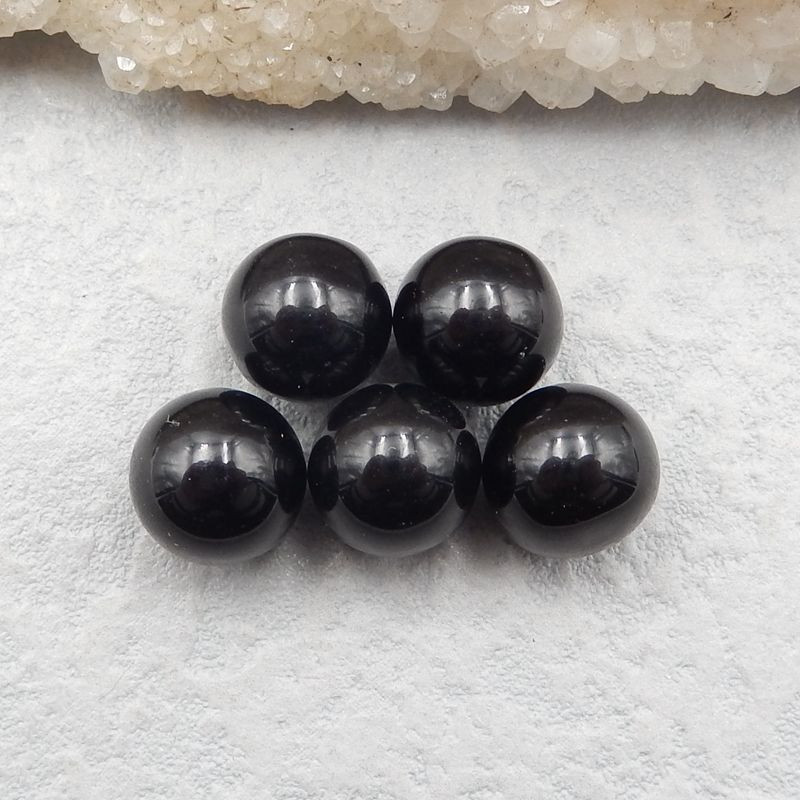
什么是类矿物质?矿物质 vs. 类矿物质及示例
 类矿物是一种天然物质,与矿物有相似之处,但并不符合所有官方地质学矿物标准。类矿物通常是有机物质,尤其缺乏晶体结构,但它们常被用作宝石。
类矿物是一种天然物质,与矿物有相似之处,但并不符合所有官方地质学矿物标准。类矿物通常是有机物质,尤其缺乏晶体结构,但它们常被用作宝石。
大多数人都知道宝石是美丽、色彩缤纷、闪闪发光的珍宝,但宝石到底是什么呢?人们对宝石的定义各不相同,但许多资料将宝石描述为用于装饰的矿物,有时也提到有机宝石。
了解矿物和类矿物之间的区别为什么如此重要?如果您正在学习宝石学,了解它们不同的特性有助于鉴定。对于普通的宝石爱好者来说,这些知识可以帮助您更明智地购物,进行正确的宝石护理,并了解您心爱珠宝背后的迷人历史。
本指南将教您有关矿物与矿物以及哪些宝石实际上是矿物的所有知识。
首先,我们必须建立一些关于矿物的基础知识。

什么是矿物?
每种矿物都根据其化学成分和内部结构进行大致分类。有些矿物的成分相同,但内部结构不同,因此属于不同的矿物。例如,钻石和石墨都是由不同排列的碳原子构成的。
在地质学中,矿物定义有五个部分或需要满足的要求:
最后两个可能有点令人困惑。我们来快速讲解一下。
归根结底,我们从一种或多种元素开始,例如硅或氧。当元素通过化学反应结合时,我们得到像二氧化硅这样的化合物(或物质)。
在矿物中,元素每次形成时都会以相同的有序排列组合。例如,每一种石英矿物内部的硅和氧(二氧化硅)的排列方式都是相同的。
形成过程中潜入的内含物会形成同一种矿物的不同颜色。对于石英来说,铁和铝等内含物可能会形成黄水晶或紫水晶。
你可以把内含物想象成蛋糕中添加的额外风味。蛋糕的关键成分都有固定的比例,这些成分对蛋糕的品质至关重要,就像矿物质的化学元素一样。添加的成分,例如坚果、水果或巧克力,就相当于矿物质中的内含物。
显然,有很多与矿物相关的定义和术语,但这些术语从何而来?
谁决定矿物术语?
矿物的官方术语来自国际矿物学协会 (IMA)。IMA 成立于 1958 年,其部分目的是为矿物创建标准、一致的名称和定义。
IMA成立于1958年,相对来说比较现代,比宝石学的起源晚了近30年。该组织每年都会认可新的矿物,截至2022年1月,已累计认可了5780种矿物。
现在您已经了解了矿物的要求,那么矿物的简单定义是什么?
矿物质和类矿物质之间有什么区别?
类矿物质与矿物质类似,但并非满足所有矿物质需求。因此,类矿物质的多样性可能比矿物质略高。
然而,所有类矿物(珍珠除外)都是无定形的,这意味着它们没有晶体结构。此外,大多数类矿物的形成条件相似:低压、低温,以及靠近地球表面。
然而,对于某些矿物(即生物矿物)来说,矿物和类矿物之间的区别变得很棘手。
如果某物是由生物体(例如植物或动物)构成,或是由生物体形成,则该物被称为“生物成因”。生物成因矿物与其他矿物类似,但由生物体形成。
许多矿物都是在岩石中形成的硅酸盐,但有些生物,例如藻类和海绵,会产生二氧化硅或将其融入其结构中。由此产生的硅酸盐是一种生物矿物。
那岩石呢?岩石也不是矿物,而是多种矿物的组合,以及/或者 矿物。此外,岩石也可以是宝石!例如虎眼石和青金石。您可能会看到矿物混杂在岩石中,形成“基质”宝石,或填充岩石内部的空洞(例如晶洞)。
如你所见,有很多交叉的地方需要追踪。接下来,我们将通过介绍矿物的一般类别来使内容更加条理化。
 图片:古罗马玻璃
图片:古罗马玻璃
矿物质的种类
目前尚无对矿物的官方分类,但大多数属于以下四类之一:
玻璃:坚硬的无机固体,原子排列随机,没有晶体结构(通常是由于冷却太快)
动物基:由动物的各个部分(壳、骨骼、组织等)形成
植物基:由分泌物(例如树液)或植物部分制成,通常是脱落的
液体:具有一定成分的流体,在一定温度下可结晶成矿物质
动物源性和植物源性类别可以合并为更广泛的“有机”类别。液体类别较小,仅涵盖两种物质。
不过,我们上面的分类并非涵盖所有矿物。例如,蛋白石既不是有机物,也不是液体,也不是玻璃,那么为什么它被称为矿物呢?它缺乏晶体结构,化学式中带有“n”,这意味着其成分(含水量)在不同蛋白石之间存在差异。
每个类别又可以有不同的亚型。例如,玻璃可能是火山玻璃,也可能是撞击玻璃(由陨石撞击形成)。动物类矿物可能由动物自身形成(例如珍珠),也可能由动物遗骸形成(例如斑彩石)。
矿物质的例子
下面,我们将介绍每一种矿物,包括它属于哪一类矿物(如果有的话)。

琥珀:植物基;从古老松树中分泌出的植物树脂化石,硬化成半透明的天然塑料,里面通常有昆虫或植物。

菊石:以动物为原料;已灭绝的软体动物菊石的彩虹色化石壳,由碳酸钙和微量矿物质组成。

珊瑚(珍贵珊瑚) :以动物为基础;通常颜色鲜艳,分枝状,由珊瑚虫脱落的外骨骼,由碳酸钙组成。

黑玉:植物基;一种煤炭,由分解的木材埋藏在极热高压下形成。那么,煤是矿物吗?没错!

利比亚沙漠玻璃:玻璃;陨石撞击产生的极端高温和高压将周围的土壤和岩石融化成液体,而液体冷却得太快而无法形成晶体,从而形成了撞击玻璃。
汞:液体;由于其明确的化学成分和在-38.8℃时结晶成矿物的能力,一些矿物学家将其归类为类矿物。

黑曜石:玻璃;当流动的熔岩冷却过快而无法形成晶体时,就会形成深色的火山玻璃;当其呈圆形和鹅卵石状时,被称为“阿帕奇眼泪”。

蛋白石:无定形、硬化、水合硅胶,含水量不同。

珍珠:动物源性;结晶性有机矿物,由碳酸钙(珍珠层)同心层组成,由某些软体动物在刺激物进入其壳时形成。
浮石:玻璃;熔岩喷发时形成的轻质、多孔火山玻璃,其温度和压力的快速下降会产生气泡,并在凝固时冻结在原地。

玻璃陨石:玻璃;陨石撞击爆炸导致物质迅速熔化、飞到空中,然后落回地球,冷却过快而无法形成晶体时形成的一组撞击玻璃矿物(包括捷克陨石)。
凝灰岩:流纹岩火山灰因压力而压实,含有玻璃碎片和其他矿物晶体外壳。
水:与汞类似,由于其明确的化学成分和在 0℃ 时结晶成矿物(冰)的能力,一些矿物学家将其归类为矿物。
等等,冰是类矿物吗?不,它是一种矿物!这可能令人惊讶,但自然形成的冰(不是在冰箱里)严格来说也是一种矿物!

用矿物宝石混合您的风格!
完成所有这些,你肯定能在矿物与矿物的测试中脱颖而出!更重要的是,你掌握了成为自信、精明的宝石买家所需的知识。
类矿物或许不像矿物那样简单直接或储量丰富,但这并不意味着它们就逊色于宝石。此外,许多类矿物还能让我们了解地球——乃至更广阔的宇宙——浩瀚而迷人的历史!
那些寻找独一无二、有故事的宝石的人一定会爱上任何矿物宝石。
想探索各种美丽的类矿物和矿物吗?今天就来寻找你心仪的宝石吧!
搜索Gemstone Encyclopedia
相关拍卖
相关文章
最新的文章
文章分类
How To's is where you will find helpful articles from gem Rock Auctions on how to cut gemstones, select gemstones and buy gemstones.
9文章数




